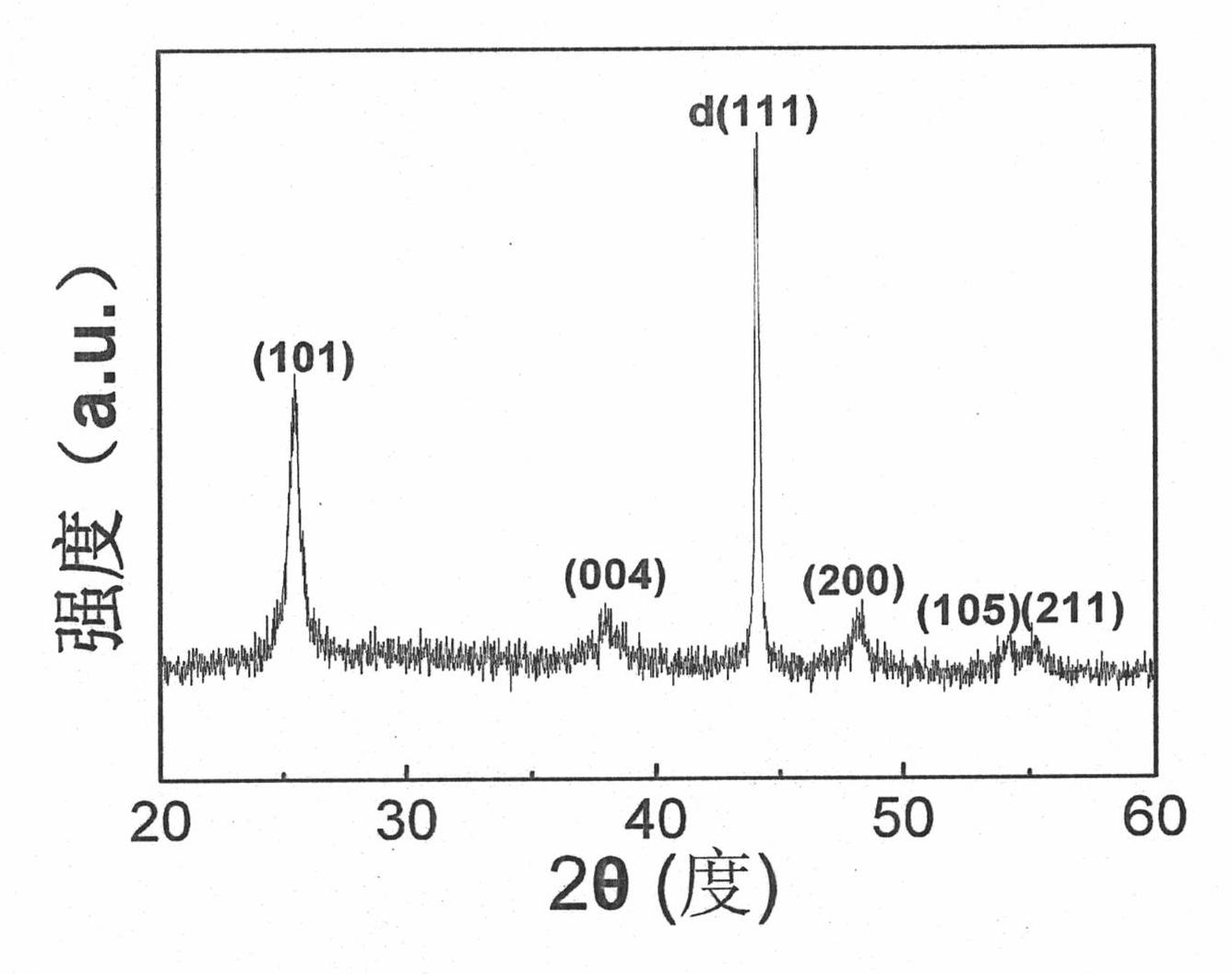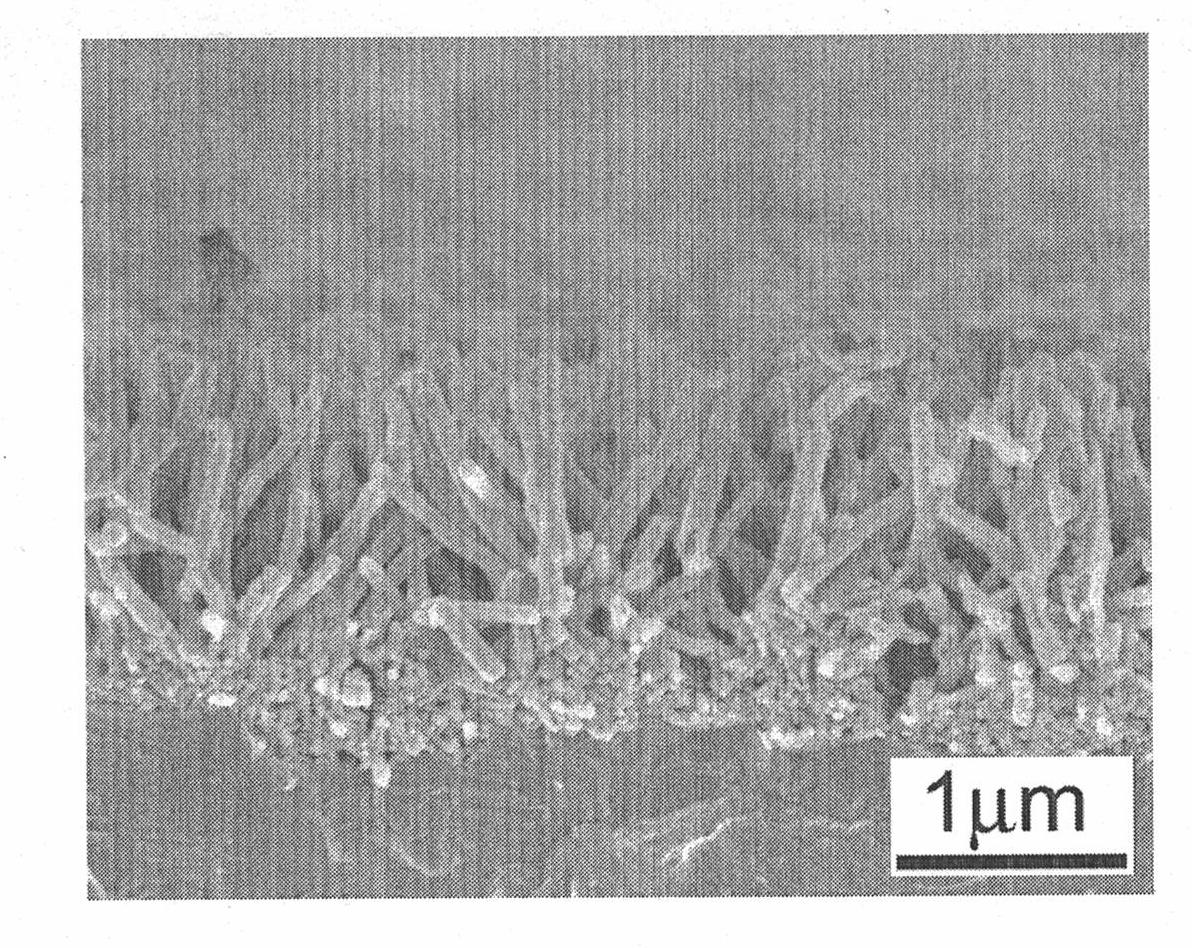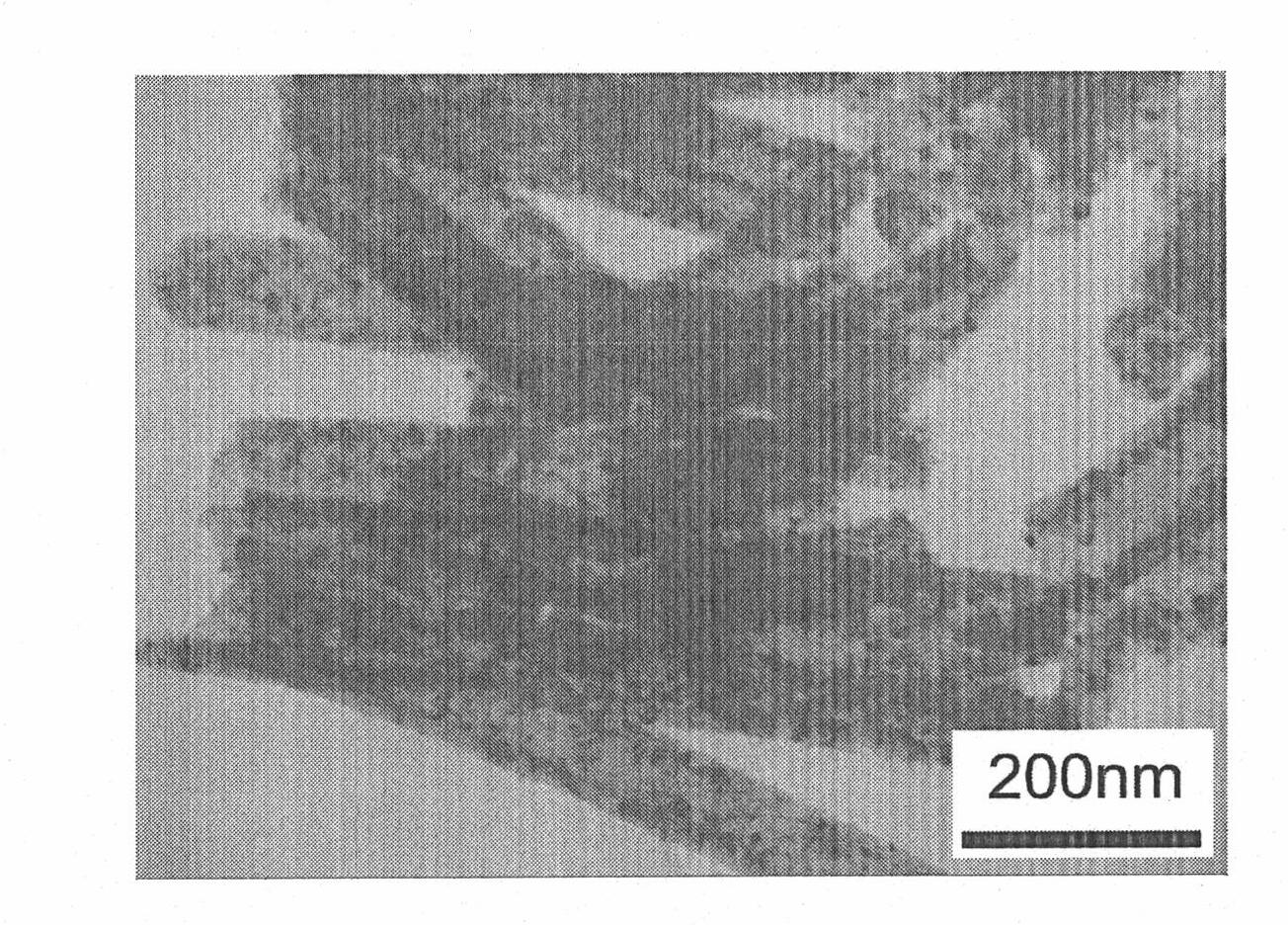N-shaped titanium oxide nanotube/p-shaped diamond heterojunction photocatalytic material and preparation method
A photocatalytic material, diamond technology, applied in the direction of metal/metal oxide/metal hydroxide catalyst, catalyst activation/preparation, chemical instruments and methods, etc., to improve separation, maintain photocatalytic performance, and stabilize photocatalytic performance Effect
- Summary
- Abstract
- Description
- Claims
- Application Information
AI Technical Summary
Problems solved by technology
Method used
Image
Examples
Embodiment 1
[0023] Example 1 Growth of TiO on boron-doped polycrystalline diamond film 2 Nanotube Preparation.
[0024] The boron-doped p-type polycrystalline diamond film is prepared by microwave plasma CVD, the substrate is intrinsic silicon Si, the microwave power is 400-600W, the pressure is 7.5-8.5kPa, the flow rate of hydrogen gas is 200-300sccm, and the flow rate of methane gas is 4-6sccm. The boron source uses borane or trimethyl borate, and the borane or trimethyl borate is carried by hydrogen gas into the reaction chamber, the flow rate is 5-15 sccm, the substrate temperature is kept at 700-900°C, and the film growth time is 3-6h.
[0025] To grow boron-doped p-type CVD polycrystalline micro-diamond film, hot filament CVD, DC hot cathode CVD or DC jet CVD can also be used.
[0026] 30ml of equimolar (0.025mol / L) Zn(Ac) and HMT mixture was stirred for 10min and then poured into the lining of a 40ml reactor. Put the above-mentioned p-type diamond film vertically into it, seal it...
Embodiment 2
[0029] Example 2 Testing the electrical properties of the n-type titanium oxide nanotube / p-type diamond heterojunction
[0030] The electrical properties of the n-type titanium oxide nanotube / p-type diamond heterojunction obtained in Example 1 were studied. n-type TiO 2 Schematic diagram of nanotube / p-type diamond heterojunction structure Figure 4 shown. Press the conductive side of the conductive glass (ITO) down on the TiO 2 The nanotube array is used as a conductive cathode; p-type diamond is used as an anode. Use silver paste to connect copper wires to make ohmic electrodes. Connect it with a Keithley 2400 digital source meter for testing with wires. I-V test results such as Figure 5 It is shown that the heterojunction has obvious rectifying properties.
Embodiment 3
[0032] The n-type titanium oxide nanotube / p-type diamond heterojunction obtained in Example 1 was used for photocatalytic degradation of the organic dye reactive yellow 15 (RY15) in a self-made reactor. In the experiment, the irradiation light source is a 500W high-pressure mercury lamp, the concentration of reactive yellow 15 dye is 10mg / L, the volume is 4ml, and the illuminated area of the sample is 2cm 2 . In order to compare the photocatalytic effect of the heterojunction photocatalytic material, in addition to the long TiO 2 Photocatalytic tests performed on intrinsic diamond polycrystalline films of nanotubes. Compare the result as Figure 6 shown. By comparison, the n-type titanium oxide nanotube / p-type diamond heterojunction exhibits more excellent photocatalytic performance.
[0033] In order to measure the photocatalytic stability of the n-type titanium oxide nanotube / p-type diamond heterojunction photocatalytic material, the heterojunction photocatalytic mater...
PUM
 Login to View More
Login to View More Abstract
Description
Claims
Application Information
 Login to View More
Login to View More - R&D
- Intellectual Property
- Life Sciences
- Materials
- Tech Scout
- Unparalleled Data Quality
- Higher Quality Content
- 60% Fewer Hallucinations
Browse by: Latest US Patents, China's latest patents, Technical Efficacy Thesaurus, Application Domain, Technology Topic, Popular Technical Reports.
© 2025 PatSnap. All rights reserved.Legal|Privacy policy|Modern Slavery Act Transparency Statement|Sitemap|About US| Contact US: help@patsnap.com



